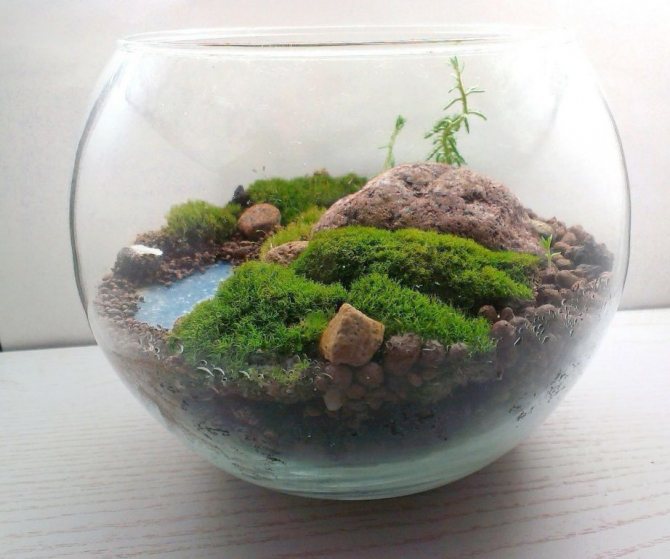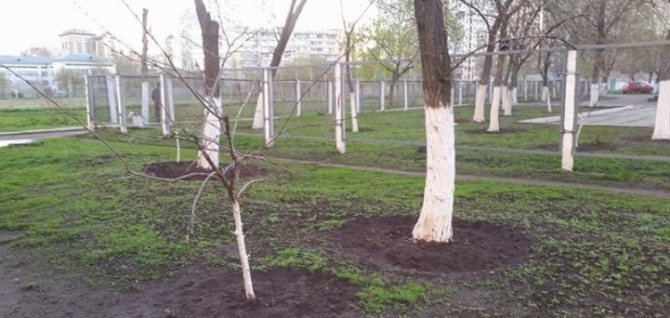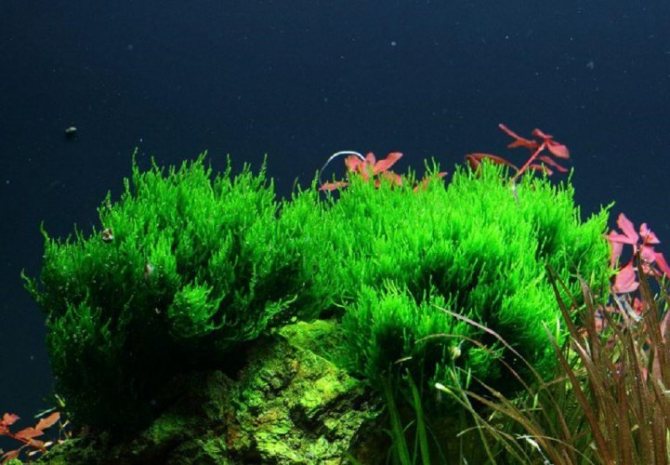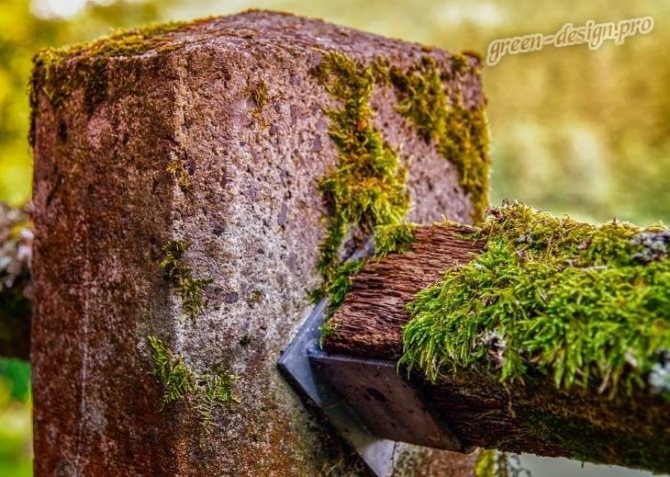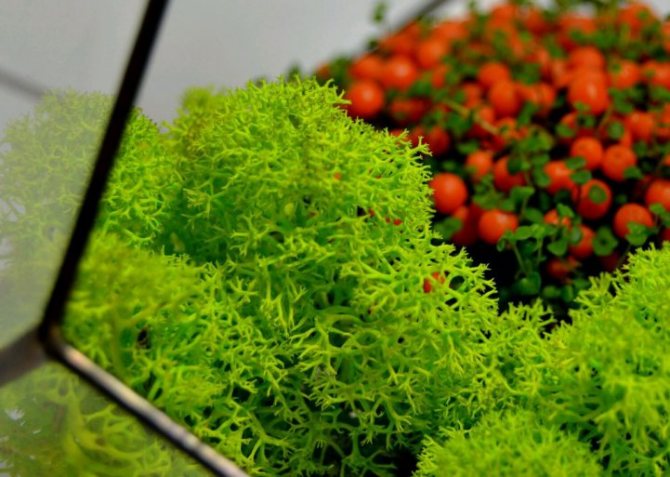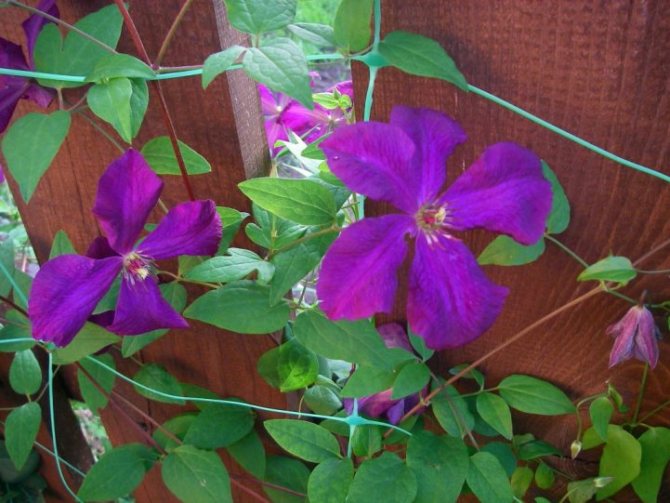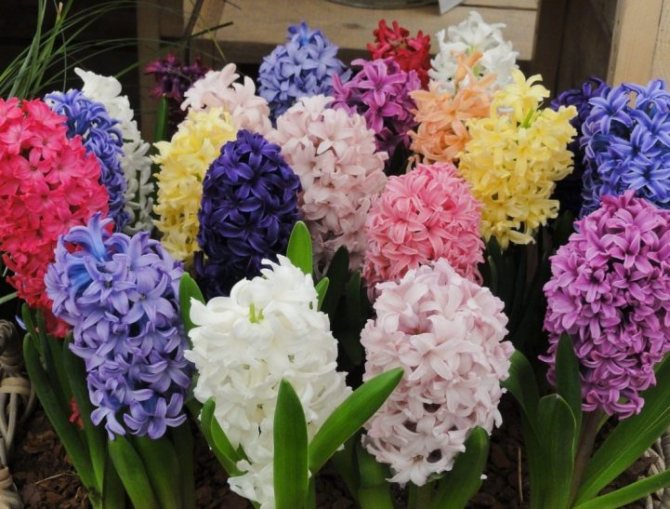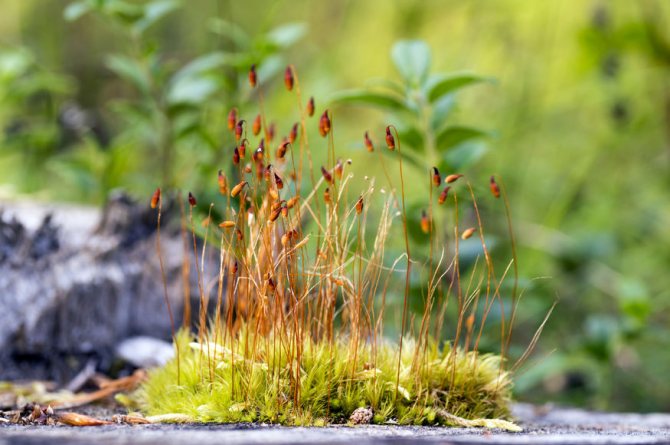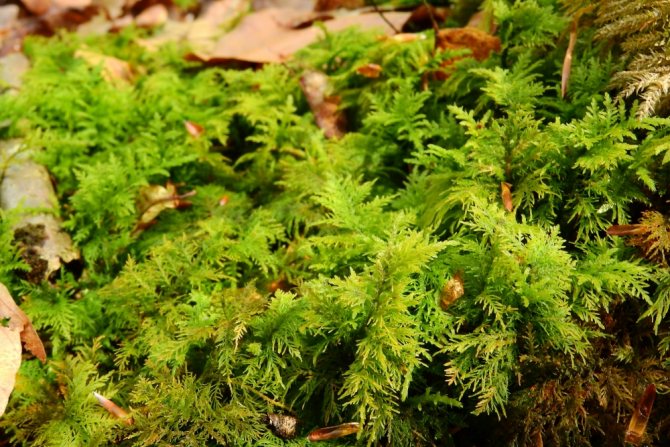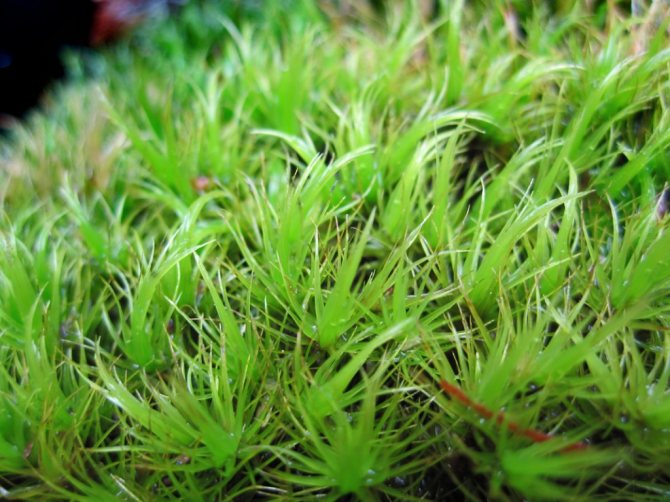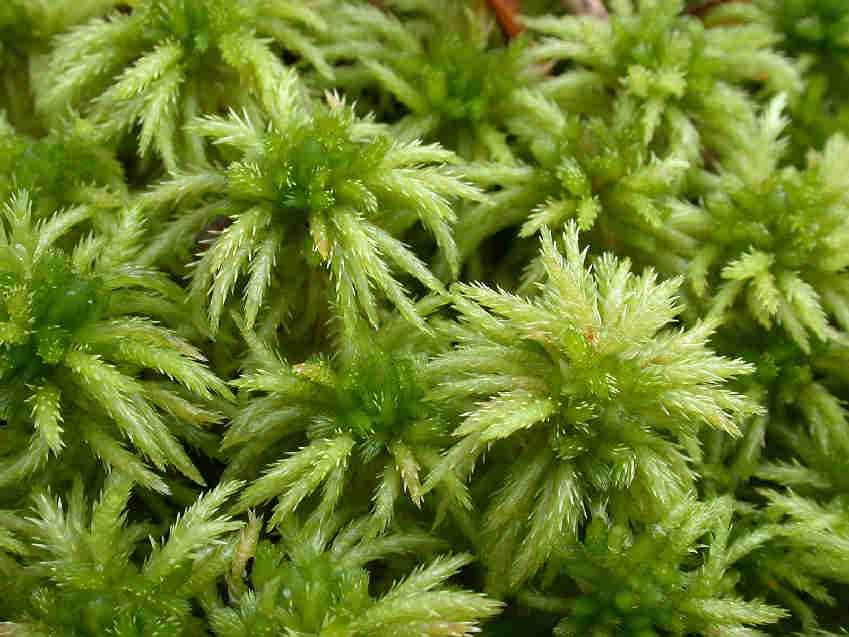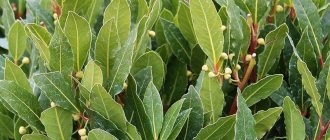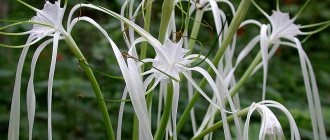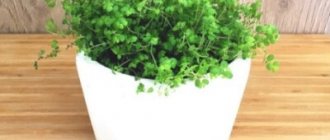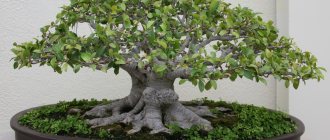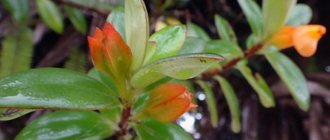How to grow moss?
Bryophytes are considered one of the most ancient plants on Earth. There are more than 20,000 species of them. Bright and beautiful green pieces can decorate any interior, garden or vegetable garden. “Is it possible to grow different types of moss with your own hands at home? How to do it correctly? What kind of care is needed for an unusual plant? What kind of moss to choose? " - all this interests everyone who decides to grow it at home. In our article you can find answers to all questions.
There are many types of moss. But all of them are united by the absence of a root system and flowers. Green pads need very little to grow: moisture and diffused light. Many people think moss causes allergies. However, this opinion is erroneous, as people often confuse moss and mold. Therefore, if there is a desire to decorate an apartment, garden, aquarium or vegetable garden with a beautiful green carpet, then you should not deny yourself this. Bryophyte will not cause any harm, since it is a full-fledged ornamental plant.
The following types of moss are distinguished:
- Forest moss (or Christmas). This type was named because of the shape of the leaves: they resemble Christmas tree needles that grow in layers. Forest moss grows very slowly and only under optimal conditions. The temperature should not exceed +22 degrees. The light should be diffused: there are more shadows than the sun.
- Fern. The name speaks for itself, as moss leaves are very similar to fern leaves. This species loves shade. Moss grows quickly and densely.
- Richia. This representative is the most widespread in the world. Moss grows in a glomerular shape and, unlike other species, needs sunlight.
- Key. This species is no less common than ricia. The color of the moss depends on the lighting, for example, you can find reds and dark greens. The main feature of the key moss is its unpretentiousness. It grows quickly and well.
- Hypnova. This type of moss grows on rocks, soil and branches. Hypnum bryophyte especially needs shade.
- Peat (or sphagnum). Anyone who loves indoor plants and grows them knows that some flowers, such as an orchid, cannot live without peat moss. The "native" habitat of sphagnum is a swamp.
- Weeping. The height of such a moss is no more than 50 centimeters. Bryophyte branches fall down, forming a beautiful green crown. You can meet moss in trees.
- Javanese. This type of moss is unpretentious in care and feels great both in dark and light reservoirs. Javanese bryophyte is often found in aquariums.
- Icelandic (or subulate bryozoan). This plant differs in that it can bloom (usually from July to September). At this time, the green lump is decorated with small white leaves. Icelandic moss is one of the few that can be grown by seed.
- Scandinavian moss (or lichen) is a plant that the reindeer feed on in winter. This type looks very nice in jars that can be placed on the windowsill.
Any containers are suitable for growing moss at home: an aquarium, jars, bowls, vases.In addition, decorative moss has long been used, from which wall panels are made.
What do you need
- Shovel or scoop
- Putty knife
- Blender
- Water
- Buttermilk
Article Information
Categories: Gardens and vegetable gardens
In other languages:
English: Grow Moss, Español: cultivar musgo, Italiano: Far Crescere il Muschio, Deutsch: Moos anpflanzen, Português: Cultivar Musgo, 中文: 种植 苔藓, Nederlands: Mos als bodembedekker toepassen, Čeština: Jak pěstovat Indonesia: Jak pěstovat Indonesia , Français: faire pousser de la mousse, 日本語: コ ケ の 栽培, Tiếng Việt: Trồng rêu, العربية: زراعة الطحالب
- Printing
- Edit
- Write a letter of thanks to the authors
This page has been viewed 85,874 times.
Was this helpful?
How to grow moss at home? Just don't ask why. And don't say that he grows well on the street. On the street - it's not in a pot on the windowsill.

Grow it first in a large, circular aquarium with appropriate surroundings. Admire. Then we'll see why or go crazy, give two!
Moreover, where it grows, let it be there. And at home, you still need to work hard to grow this. Strict points on humidity and the amount of light will not allow you to shove a piece of moss from the forest into a jar and sit, waiting for a beautiful picture.
So. We plant moss at home. Stop. How do we plant? Neither species has roots or seeds. How will we propagate? By disputes, as in nature. And where can I get them? It's not like wandering around with a microscope in search.
In fact, everything is simple. Go for a walk. We don't go to the forest. Forest moss that grows on trees is very aggressive and shaggy. Instead of an alpine idyll, you will get the count's ruins after the bombing. We need a moss that grows on stones, snags, old walls. Even just from the shaded side of buildings.
We pinch ourselves a little. You can just remove the plate. Who writes there: be careful not to damage the roots? You should have a bonus. Nobel Prize. Still, for the first time in millions of years, roots were found on moss!
And we calmly stomp home. By the way, in nature, the ripening time for spores is approximately July and August.
how to germinate wheat at home
How to grow moss at home?
Moss is a wonderful ornamental plant, which is less whimsical to care for than flowers, is more resistant to diseases, and also does not require pruning, hilling and feeding. It doesn't take a lot of energy to grow it at home. The main thing is to decide on the container in which the moss will grow, and its variety. The fact is that a bryophyte that grows in water cannot live on a tree or stone, and vice versa.
Where can I get the material for planting? There are several options:
- You can find a specimen in the forest. The moss must be cut carefully, while capturing the sod layer, then there is no need to prepare the soil for growing. This venture has one drawback: forest mosses can get sick or insects can live on them.
- You can buy a copy at the store.
- Grow from seeds. This method takes longer, but it is reliable.
You can start sowing seeds from March to April. To grow seeds, you will need a wide container and a special substrate, which should consist of garden soil, humus and sand, taken in a ratio of 2: 1: 1, respectively. Seeds are sown into moistened soil (they do not need to be pressed into the soil or sprinkled with earth). Cover the pots with seedlings with transparent polyethylene, and then put them in a place with diffused light and a temperature of +22 degrees. The first shoots may appear in a week.
Bryophyte, which has grown from seed, has a stem-like root system. And with vegetative propagation, the root system is superficial.
If the moss is bought in a store, then it must be immediately placed in a container, where it will grow. A layer of small pebbles or expanded clay should be laid out at the bottom of the transparent container. The second layer is granular coal, on which the substrate is laid out (you can take the same soil as for sowing seeds). It is necessary to spray the soil with a spray bottle. Now that the container is ready, you need to carefully lower the moss into it. The first days after planting, bryophyte must be sprayed daily from a spray bottle. The air humidity in the room where the container with moss is located must be at least 70%. In two to three weeks, the plant will get used to it, adapt to new conditions, and the active growth phase will begin.
As for leaving, you should adhere to the following recommendations:
- Water the bryophyte as it dries.Despite the fact that moss loves moisture, too much moisture can lead to rot. If the bryophyte becomes dark, then the amount of watering must be reduced.
- Moist and cool air is the best friend for moss. Therefore, experienced gardeners recommend placing moss on a loggia, balcony or windowsill.
- Lighting should be moderate. It is best to avoid direct sunlight altogether, as they can dry out the green lump.
Top dressing is optional. But you can fertilize the moss with kefir and beer. These liquids are mixed with a mixer to a homogeneous consistency and added once every few days for a week.
Moss in the garden
Much easier is the case with the cultural cultivation of moss cover in the open air. Here you do not have to painstakingly create the necessary conditions and plant the pads. You need to get a sufficient piece of moss, healthy, without dried and suspicious areas. The blender is loaded with two glasses of water and milk, plus the extraction from the forest. Having received a cocktail consistency, you "paint" the intended area with this composition. Thanks to milk, moss takes root over the entire treated surface with a 90-95 percent probability.
With some hard work and a strong artistic flair, your fence, wall, or rock garden can be a work of art. Your immediate task will include only regular watering of the "picture" until the moss is definitely fixed on the territory provided to it.
3 parts: Grow the moss Plant the moss in the garden / lawn Propagate the moss
Moss is a plant that grows from spores, not seeds. Mosses grow in all climatic zones on Earth. Most of them grow out of the ground, but they can grow on any hard surface: they can often be seen on tree trunks, stones and other solid objects. Moss is ideal to add a luscious green color to your garden and can be used as a ground cover instead of grass.
Part 1 Growing moss


Select the type of moss.
Moss is an amazingly diverse plant. There are dozens of options for the traditional soft green carpet. The two main plant types are pleurocarpous and acrocarpous. Pleurocarpous spreads low on the ground and grows rapidly in breadth. Acrocarpous grows in "bushes" and first stretches in height and becomes thicker, and only then spreads horizontally.- Moss never blooms. From time to time, small stalks with thickened tips appear in it - sporangia, or capsules with spores, with which moss propagates.
If you want to cover a large area with moss, such as your entire lawn, consider using two types of moss at the same time, pleurocarpous and acrocarpous.
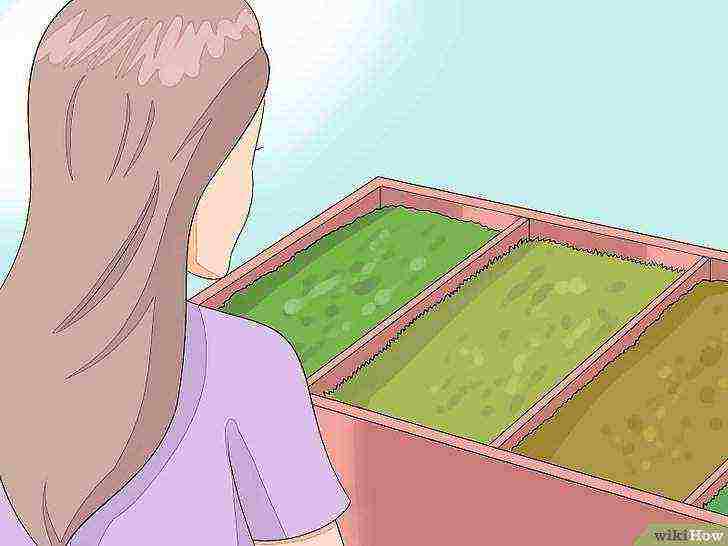

Choose moss from your garden nursery, if desired.
For professional advice or to look at a variety of moss species, head to your local garden nursery. Different types of moss grow beautifully together, so feel free to mix them up as you see fit.- If you are interested in a wide variety of moss, but there is no nursery nearby, look for one in online gardening stores.
Read the label how fast the moss grows. Some species grow at incredible rates, so you only need a few; others will have to buy more.
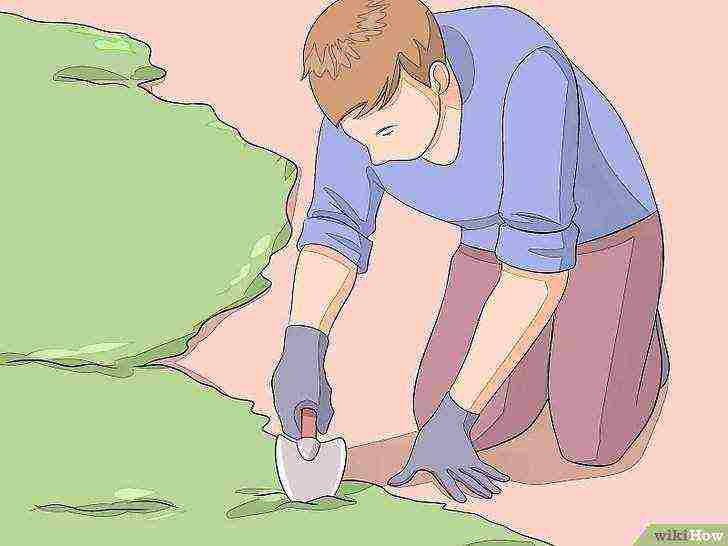

Get some moss from another garden or forest.
If you are not too picky about what kind of moss to grow, or want to save money, try planting wild moss. Just take a shovel or scoop and scoop up some moss from the ground or from a tree trunk. Try to grab the moss along with the soil (or other substance it grows on) so that it doesn't dry out and make replanting easier.
Part 2 Planting moss in the garden / lawn


Choose a damp area out of direct sunlight.
Moss is not very picky, but ideal conditions exist for it. Most species prefer humid locations and indirect sunlight (i.e. slightly shaded areas). It makes a great green carpet under large trees and other plants. However, if the only suitable place is in the bright sun, don't worry: most likely, the moss can grow even there.- Moss perfectly absorbs excess moisture in places that are heavily flooded by rain. Plant it in such areas of your garden to improve drainage.
Moss does not have a root system, so it can easily grow in rocky soil where grass cannot be grown.
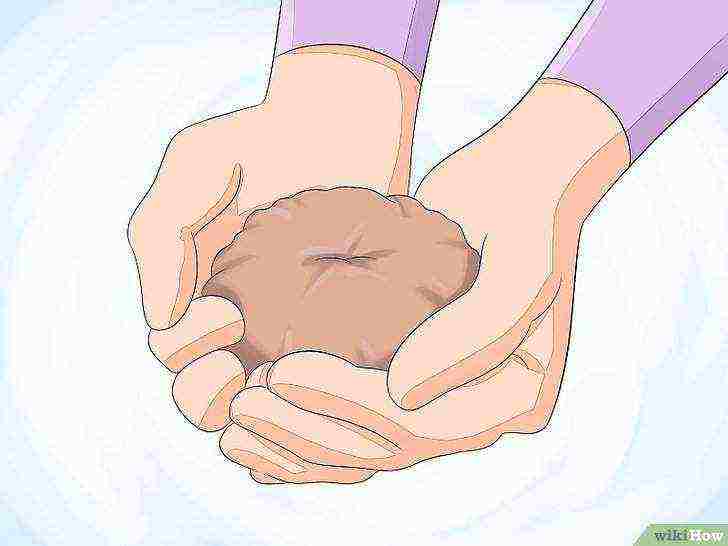

Choose an area with acidic soil.
If you will be planting moss in the ground, loosen the soil with a rake until it becomes soft and loose - just enough that you can easily pick it up in handfuls. Check the pH level and if necessaryadjust it
... Moss prefers acidic soils with a pH between 5 and 5.5. Clear the area in advance of grasses and other plants.
- If you are planting moss in a flat area, you need to carefully level the ground. Unlike grass, moss will only accentuate all the minor irregularities in the ground.


Press the moss down onto a damp surface.
Use a hose or sprayer to liberally water the planting area. Then place each copy on top of it with a firm hand. Press the moss into the soil or press it against the stone surface so that it takes root and does not move anywhere.
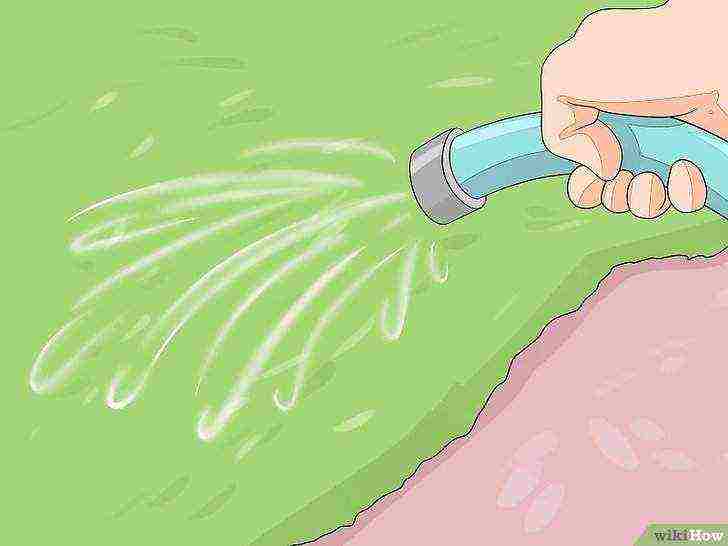

Water the moss daily for 2-3 weeks.
Watering daily will speed up the growth of the moss and help it settle in place. This will help grow and keep the moss in place. Better to use a spray bottle or hose with a very narrow tip that will spray water onto the moss. A strong jet of water can damage plants. Alternatively, a very gentle irrigation system can be used to keep the moss constantly moist.- If the moss turns dark green or stains over time, you are most likely watering too much.
You can reduce watering about a month after planting, but the moss should always remain damp if possible.
Part 3 Propagating moss
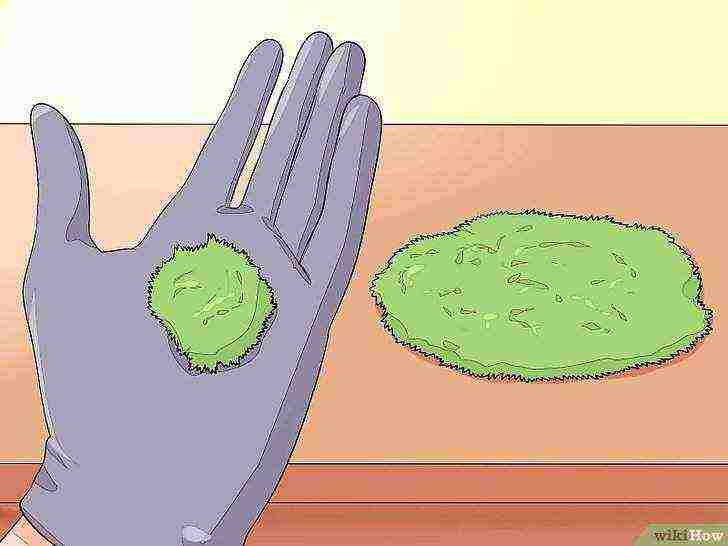

Divide and plant the moss.
One way to spread the moss is to cut the existing moss into 0.5–1 cm pieces and plant them separately. Plant the resulting pieces 2-3 cm apart.- This method will only work if you are planting moss in the ground. Attempting to plant moss in this manner on rocks or other objects is unlikely to succeed, as small pieces of moss will not stick.


Make a moss milkshake to plant on a vertical surface.
No, you definitely don't need to drink such a cocktail! Make a super-mix for growing moss on anything, turning it into a liquid that can be applied to objects and vertical objects - walls, rocks, flower boxes, trees. Place a large piece of moss, two glasses of buttermilk, and two glasses of water in a blender. Mix until the contents are similar in consistency to a regular milkshake.- This mixture does not have the most pleasant aroma, so it is best to do it outdoors so that the house does not smell.
You can use dead or live moss - any will do.
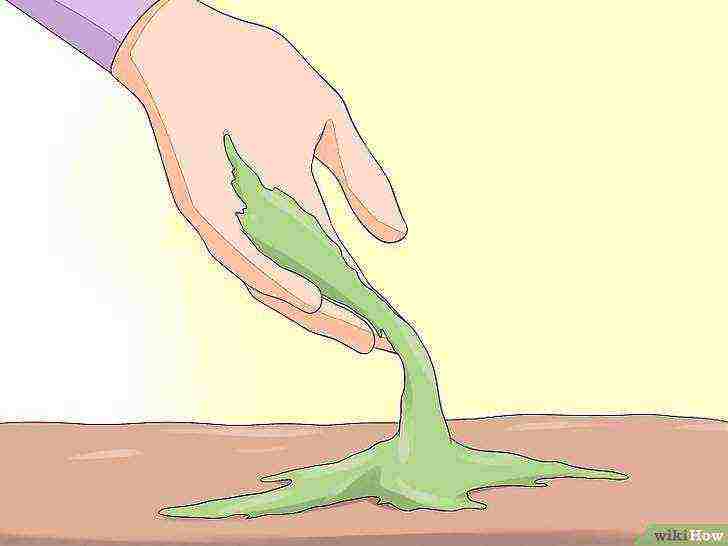

Apply your cocktail to the surface where you plan to grow the moss.
Cover the desired objects or garden area with a moss cocktail. You can simply pour the mixture over the objects, use a brush or spray bottle. You can also water the soil with this mixture instead of planting whole plants or plant pieces, although this will not look so attractive.
Decorative, or stabilized, moss
Decorative, or stabilized, moss is a new design solution that can beautify any home. Pictures and panels are made of this moss, which are attached to boards and hung on the wall.This composition looks very original. Stabilized (or sleepy) moss requires no watering or other special care.
Advantages of decorative moss:
- retains its appearance for 15 years;
- does not need special lighting;
- being in a state of sleep, the moss does not grow, which means that it does not need to be pruned;
- dust does not settle on it;
- does not cause allergies;
- the moss is not toxic;
- resistant to mold and fungi, and also not susceptible to disease.
On an industrial scale, moss is harvested by hand. This selection of material allows you to control the balance of the ecosystem. After harvesting, the moss is thoroughly cleaned from the remnants of grass, dirt, and then subjected to a stabilization process. In fact, the plant is put into a dormant state. But it is thanks to the stabilization process that moss can retain its color and properties for a long time, but not grow. The essence of the process is that a special solution based on glycerin is introduced into the moss. As a result, decorative moss turns out to be soft, resilient and very beautiful.
Stabilized moss in office and apartment interiors
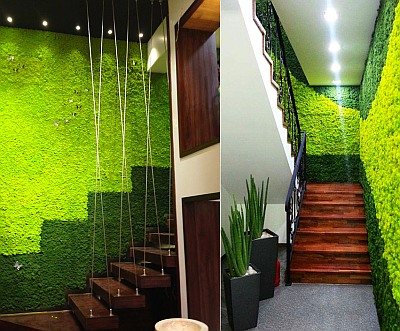

Where did the moss come from on the walls of apartments and houses? Would you be surprised if we say that stabilized moss comes from Scandinavia? It looks like this is a region that will never stop providing us with new products and solutions! Decorative moss can also be found in the CIS countries, but here it is just beginning to gain popularity. Reindeer cladonia, also called Icelandic moss, grows in cold regions, including northern Europe and North America. However, its biggest birthplace is where reindeer live - hence its name. Deer, because this plant is a favorite delicacy of these animals.
How to grow in the country?
The easiest way to grow bryophyte is in the country, in the yard or in the garden. It is not required to create optimal conditions here, to maintain the required humidity level. The main thing is to choose a darkened place for landing. If at the beginning of spring seeds were planted at home and moss has already grown from them, then at the end of May it can be safely transferred to the site.
Before planting, you must inspect the specimen. There should be no dry areas on it, and if there are any, it is better to remove them. You will also need two glasses of water and the same amount of milk. All ingredients, including moss, are loaded into a blender and crushed. After that, the mixture must be taken to the place designated for the moss and distributed over the surface. Now all that remains is to wait for the bryophyte to take in and start growing.
In summer, moss does not grow well due to high temperatures and insufficient rainfall, so it is better to spray the plant yourself so that it does not dry out.
You can grow moss in an apartment, in a country house, and in an aquarium. The main thing is to choose the right planting material, and in terms of care, bryophyte is unpretentious. A graceful green lump will be a wonderful decoration for the interior, the outer surface of the walls or the local area.
Ideas for the use of bryophytes in the backyard area
As a rule, in natural conditions, mosses grow on the crown of trees and on moist soils. In the design of the garden, moss can be used for various purposes: for landscaping the site, creating mossiness of individual architectural elements, enriching the soil with moisture and improving the microclimate.
Lawn. Growing a lawn is a troublesome activity that requires special skills, the selection of specific plants and careful year-round maintenance. Bryophytes can be used to grow a lazy lawn. Unlike grass, a moss lawn does not get trampled and does not require regular correction, as it grows in breadth rather than upward. Such a canvas looks original both in small empty areas of the garden, and in spacious home gardens.
Stones.Moss looks quite unusual in landscape design when creating rockeries, alpine slides and a city of stones. A spore cocktail can be used to "drink" boulders, stone hedges and sculptures. The main thing is that their surface is porous; otherwise the bryophytes will have nothing to cling to. Tuff and limestone are the most friendly to bryophytes.
Flower beds. You can create a flower bed in a garden not only from flowers. Mosses are ideal for a refined bed in areas with problem soil. Convex flower beds with a smooth, soft green cover look quite extraordinary.
Reservoirs. If the garden area has an artificial reservoir (pond, stream, natural pool), it can be landscaped. Certain varieties of mosses (for example, sphagnum) take root well in marshy areas, adding to the neatness of the coastline.
Sculptures. Moss in garden design is often used to decorate sculptures and individual architectural elements made from natural materials. It's just a unique way to make things look old.
Graffiti. Graffiti on stone hedges, buildings and facades of houses, made from a moss cocktail, is a new trend in landscaping. The same cocktail is useful for growing paintings, inscriptions and abstractions on vertical surfaces. It is recommended to apply the pattern with a brush to give the panel a clear outline.
A beautiful evergreen, moss, is a great decoration for landscaping. Mosses on stones and walls give a special expressiveness and an element of some antiquity and abandonment, creating unique paintings and giving the landscape a finished look. You can grow moss yourself if you know how to do it.
How to grow moss on a stone or on a wall?
Growing moss on hard surfaces - natural stone, concrete, brick, pottery, can be done from materials collected by yourself, scraping them off mossy stones, or you can use natural dry moss.
So, how to grow moss from dry: you need to mix a glass of such moss with two glasses of kefir or natural yogurt so that it looks like a cream in consistency. If necessary, you can dilute with a little water or, conversely, add more chopped moss.
The resulting mixture must be applied to the surface of stones or walls in the right places, simply smearing it with a brush or hand. Already after a month and a half it will be possible to judge how much he has taken root.
Can moss be grown in an apartment?
If you don't have a garden, you can create one right in your city apartment. To do this, you need to turn on your imagination and stock up on some improvised means.
Mosses look most beautiful in transparent glass containers - vases, jars, etc. But if you want, you can grow it on a flat surface like a dish.
Moss for home growing can be taken in the wild, or you can buy it at the nursery. It is best to plant it in the same sod in which it grows in the forest. At the bottom of the container, you need to lay out a drainage layer in the form of pebbles and charcoal.
Moss care consists in timely spraying and ensuring the desired level of illumination. With proper care, moss will perfectly complement your home mini-garden, making it look more natural and natural.
How to grow moss at home? Just don't ask why. And don't say that he grows well on the street. On the street - it's not in a pot on the windowsill.
Grow it first in a large, circular aquarium with appropriate surroundings. Admire. Then we'll see why or go crazy, give two!
Moreover, where it grows, let it be there. And at home, you still need to work hard to grow this. Strict points on humidity and the amount of light will not allow you to shove a piece of moss from the forest into a jar and sit, waiting for a beautiful picture.
So. We plant moss at home. Stop.How do we plant? Neither species has roots or seeds. How will we propagate? By disputes, as in nature. And where can we get them? It's not like wandering around with a microscope in search.
In fact, everything is simple. Go for a walk. We don't go to the forest. Forest moss that grows on trees is very aggressive and shaggy. Instead of an alpine idyll, you will get the count's ruins after the bombing. We need a moss that grows on stones, snags, old walls. Even just from the shaded side of buildings.
We pinch ourselves a little. You can just remove the plate. Who writes there: be careful not to damage the roots? You should have a bonus. Nobel Prize. Still, for the first time in millions of years, roots were found on moss!
And we calmly stomp home. By the way, in nature, the ripening time for spores is approximately July and August.
Moss: how easy is it to grow at home?


How to grow moss at home? When growing a plant, it is worth remembering its features, in particular:
- moss requires a lot of moisture and needs to be maintained at a suitable level daily, otherwise the plant may not survive. But you should be careful and make sure that the plant does not have an excess of moisture;
- The light rays on the moss should be carefully controlled because too much light can harm the moss. It is worth allocating no more than three hours per day, during which the plant is exposed to the Sun. The rest of the time it is recommended to keep the moss in the shade.
You can grow moss in any containers, the plant is unpretentious. For example, you can grow it in:
- a variety of vases, preferably transparent, as this will allow you to create the most beautiful composition and adjust it if necessary;
- special open-type bowls;
- specialized florariums.
When choosing a container, you should proceed from what composition you want to see in the final. If you are planning a small composition, then you should use a compact container, but if the composition is large-scale, then you need to use the overall capacity or use several containers in order to beat the composition in the best way.
Care
The moss composition does not require special attention. But only after the “greens” have taken root. Therefore, the main subtlety of how to grow sphagnum moss at home is to provide it with abundant moisture at first, and then maintain it at a constant average level. For a week or two, the pads should be sprayed daily, while observing so that there is no flooding effect. Condensation should form on the walls of the vessel only in the morning. If the moss cover begins to darken, it means that the intensity of watering must be reduced. When the mosses begin to grow, spraying is carried out less often, every three or even five days.
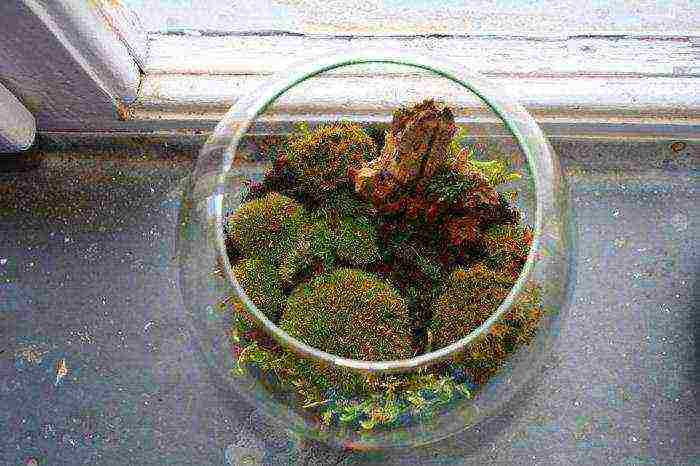

Growing moss at home can also mean fighting mold in the first step. It usually appears if the "rugs" are not brought from the store. In this case, problem areas are treated with phytosporin. Although some moss breeders believe that the plantings themselves will cope with this scourge. But it seems to us that it is better to help them: the moss is weakened until the moment of full adaptation, and it does not need additional stresses and loads.
If you created an installation in an open pot-dish, then you need to spray the moss daily. Otherwise, it will quickly dry out and lose its decorative effect.
Growing rules
The rules are completely simple, but they should be followed, otherwise even such an unpretentious plant may not survive in new conditions. When growing moss, it is recommended to use the following instructions:
- Select a container in which the moss will be placed. Clean and dry thoroughly before filling.
- At the bottom of the selected container, lay a not too thick layer of pebbles (it should be small, large pebbles will not fit and will look ugly) or expanded clay (also should not be too large).This is necessary so that subsequently moisture can be stored for a longer period.
- Cover a loose layer of granular charcoal.
- Add substrate to the current layers.
- Place the necessary elements in the resulting soil (these can be pieces of wood or other plants that you later want to see decorated with moss. When adding plants, it is important to take into account their attitude to moisture, if they do not like it, they will not be able to develop normally, so preference is worth give to moisture-loving plants. Which plants belong to this type, you can see in books or on specialized sites).
- Add moss.
- It is recommended to spray the moss daily for the first two weeks. This will provide the plant with the necessary moisture level and allow it to quickly take root in a new place. As a flavoring of the plant, you can also initially place it on the soil watered with beer or kefir. This will initially provide the moss with a fairly high level of moisture, but it will not obviate the need for spraying. It will be necessary to thoroughly spray the moss at the initial stage, because the plant will have an acute lack of moisture when planting in a new place.
After the moss has taken root, it does not need to be watered every day, watering once every three to five days will be enough. If you notice that the moss has become very dark, this indicates that the plant has an excess of moisture. In this case, the frequency of watering should be reduced.
Plant species
All bryophytes are combined into a higher order taxon - Bryophyta. It is divided into three classes:
- Anthocerotaceous.
- Liverworts.
- Leafy.
Representatives of the latter group are the most common. In humid coastal areas, anthocerotes and liverworts also play an important role in the cover. For the variety of life forms and species, the first place should be given to the Musci class. It is made up of three more subclasses:
- Andreevs.
- Sfangovye.
- Leafy.
How to grow moss at home
Mosses are among the most ancient land plants living in our time.
They need moisture and a little light for a comfortable existence.
Emerald mossy pads are not quite common plants - they lack roots, flowers, seeds.
Bryophytes, the essential nutrients known as bryophytes, are obtained from water, absorbing it over the entire surface.
Growing moss in your home is not difficult at all, and caring for it does not require much effort.
These tiny plants can be used to create amazing living compositions, miniature gardens and forest landscapes that will give your home an atmosphere of harmony and unity with nature.
You can grow bryophytes in any container, but they look most effective at the bottom of transparent round vases, bowls, in small florariums.


To begin with, in the container of your choice, put a layer of small pebbles or expanded clay on the bottom of the size of a pea or slightly larger. This will improve water permeability and prevent moisture stagnation. Lay the next layer out of granular charcoal. Then add the substrate.
Next, the most interesting thing begins - the creation of landscape design.
The surface does not have to be flat. You can make small mounds and depressions, add pieces of wood, pebbles, plant small moisture-loving plants and lichens, giving depth and sharpness to the composition, which will look like a real forest landscape.
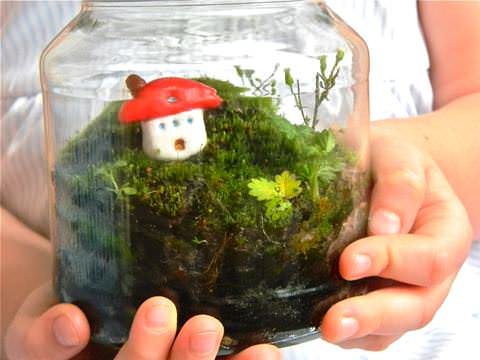

From an artistic point of view, it is better to use stones of the same type, but of different sizes.
From indoor plants, it is better to plant small ferns, selaginella, alocasia, coleus, asparagus, which can be placed in separate zones of the landscape.
For a complete encyclopedia of indoor plants, see here
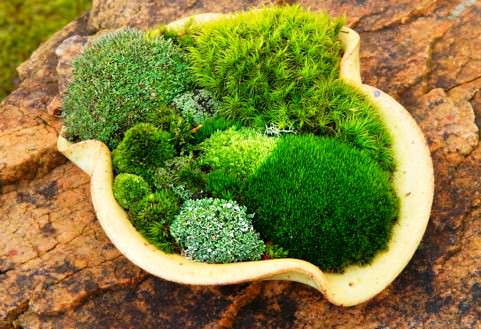

Moss pads can be taken in the forest by cutting off the top layer along with the sod, but it is better to purchase them in specialized stores in order to exclude various plant diseases from entering the house. In the first days after planting, the pads should be sprayed daily.
After a short period of adaptation, the moss will begin to grow.
An excess of moisture can be recognized by the color of the moss layer - if it has darkened, then reduce the frequency of spraying. The optimal moisturizing regime after adaptation is once every 3-5 days.


Moss fragments look beautiful on the surface of a tree or large stones. You can secure them using thin fishing line and nylon thread, or you can grow a moss layer yourself.
To do this, prepare a thick suspension in a blender from pieces of moss, kefir or beer and apply it to the desired surface. Beer or kefir will provide the plant with the necessary nutrients, stimulating its growth. It should be sprayed 2-3 times a week.
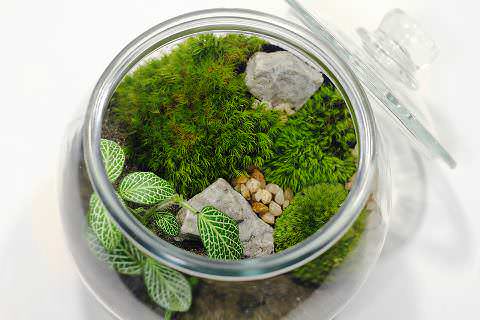

Tiny bryophytes prefer cool humid air and partial lighting. 2-3 hours of the morning sun or indirect sunlight is enough per day. This lighting makes the green hue of the bryophytes more intense.
Moss in the home is often grown in open pots as a dish. The soil substrate is prepared in the same way as for deep containers. This type of composition will require daily spraying.
Mixing several different types of bryophytes will help create an amazing collage of different shades of emerald.
How is moss used and how much does it cost?
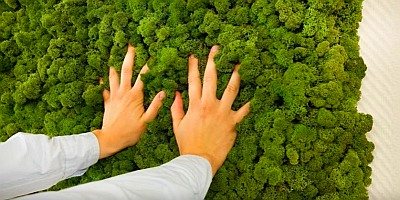

Until recently, decorative moss was available mainly to gardeners and interior designers by special order. Its rise in popularity means that you can now easily buy for your own use. In floristic, gardening and online stores you can order today:
- Pre-packaged moss in plastic bags - for small projects like jar gardens or table decorations in bags of 50 to 500 g. Price: about $ 3 for 50 g.
- In boxes - for large projects such as paintings or graffiti; in boxes from 1 to 5 kg. Price: about $ 27 per 1 kg.
- Tiled - grown on a crust panel or wooden board, it can be worn over an entire wall. Price: about 100 $ -150 $ for a panel 50 × 50 cm (
400 $ -600 $ per m2). The moss crust panel is flexible and can be bent to create various design shapes.
The prices shown are approximate and may differ from the prices in your city. Actual costs depend on the origin of the moss, the density on the panel, and its original natural color. Deer cladonia is also available in color options - besides natural shades of green or gray, you can find pink, orange, and even purple or blue mosses. All of them are decorated with natural dyes. The variety of colors encourages creativity! By combining several shades of decorative moss, you can create a colorful painting or simply choose the one that best matches the layout of your home.
Fundamental principles
Mosses, or bryophytes, are higher plants devoid of a root and vascular system. They appeared more than 400 million years ago, they do not grow only in deserts and semi-deserts due to the lack of water there. Accordingly, the first condition for growing a plant is a sufficient amount of moisture. Water also serves as a source of nutrition for him.
The second condition for the development of bryophyte is the absence of direct sunlight: under the influence of ultraviolet radiation, the plant loses its color, gets burns.


Conditions for planting mosses in the garden
Despite the unpretentious nature, mosses (bryophytes) do not take root in all areas. Moisture and shade are important for their growth, while the scorching sun can dry them out. Nevertheless, you should not push them into permanent twilight, where the sun's rays do not reach; otherwise, the shade of the cover will be faded.The most suitable places for planting moss are the northern or northeastern side of the backyard, under trees with not very dense foliage, as well as wetlands.
Another condition for the growth of bryophytes is oxidized soil (pH5 / pH6). If such land is not suitable for higher plants, then for the simplest it is an ideal option. Almost all types of mosses can be planted on such soils, including cuckoo flax, wavy trichium, gray leucoborium, etc.
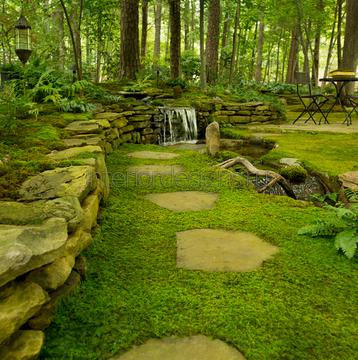

The variety of color and structure of the cover allows you to create truly magical plant panels in the garden. Shade-loving plants and flowers will be an excellent addition to bryophytes: lingonberries, strawberries, violets, ferns, and lichens.
How to plant at home
Mosses have been used in design for a long time and in a variety of ways: they are grown for bonsai, used as a decorative substrate around other plants and indoor mini-gardens. You can grow bryophyte in any container and on any surface. For indoor plantings, you can use decorative glass bowls with a wide bottom and neck, small aquariums, florariums and containers, glass jars.
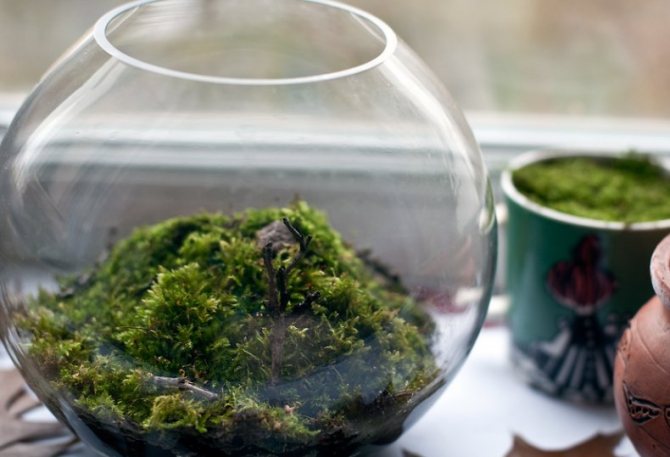

You can buy planting material in a garden store or nursery, or you can dig up in the forest.
Drainage in the form of small river pebbles or expanded clay is placed on the bottom of the selected container. Coconut is an ideal soil for growing moss for the following reasons:
- it has neutral acidity;
- it retains moisture perfectly;
- is natural and environmentally friendly;
- it is a breathable material.
We thoroughly moisten both the soil and the planting material, lay out the seedlings, slightly pressing them into the substrate. You can learn more about the planting process in the following video:
For the first few days, the seedlings should be sprayed daily with a spray bottle. In this case, the water must be clean: filtered, rain or melted. Ordinary tap water can leave a white coating on the planting surface.
When you see the seedling begin to grow and grow, reduce watering to twice a week. You need to keep the moss shaded, but in the morning when the sun comes up, put it under the rays for a couple of hours.
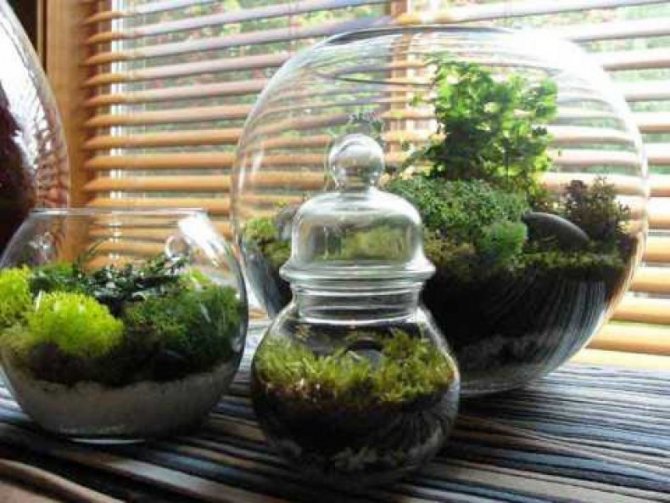

Moss green
In the life cycle of this plant species, as, indeed, in all bryophytes, the haploid generation, the gametophyte, predominates. The box-shaped sporophyte develops on the gametophyte. The largest and most widespread moss, the name of which is somewhat unusual - cuckoo flax.
Perennial plants grow on the outskirts of swamps, in swampy forests, where it forms dense and dense sod. The erect stem of cuckoo flax, as a rule, does not branch. Its height is no more than forty centimeters. Leaves are linear subulate with a median vein. This moss has no roots. They were replaced by multicellular rhizoids - filamentous ones located on the lower part of the stem. They absorb water from the soil, and in addition, they help the plant to strengthen.


Green moss cuckoo flax looks like a sprig of conifers. Its length can reach fifteen centimeters. Quite often, it is this species that covers the soil in the forest. Experts know that if cuckoo flax appears on the soil, this may mean that the soil is waterlogged. It creates dense and rather extensive soil covers, which contribute to the accumulation of moisture. This leads to the formation of swamps.
How to plant a plant on a site
In garden plots, bryophytes serve not only as a decorative decoration, but also benefit:
- in flooded areas absorb excess moisture;
- on stony soils, they are used instead of a lawn.
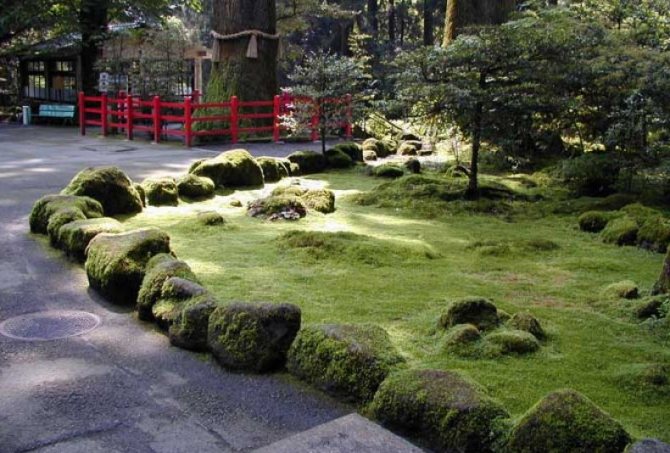

How to grow on the ground
Consider the detailed steps for planting bryophytes:
- Prepare the site in advance: level and clear of weeds and plant debris.
- Bring soil acidity to neutral.The acidic soil is limed, aluminum sulfate is added to the soil with a low acidity level (both components can be found in the store).
- Use a spray nozzle to liberally moisten the prepared bed.
- The best planting method is to cut a larger moss plate into small pieces and plant at some distance from each other, crushing it into the soil.
- Water the moss every day after planting for two weeks. During this time, the seedlings adapt to a new place.


How to grow on stones
The instructions above will not work when landing on rocks, as this requires some kind of grip. Several mixtures can act in this role - use the one that is more convenient for you:
- 200 g / ml of moss, kefir and water;
- 200 g of moss, 0.4 l of beer, 20 g of sugar;
- 200 g of moss, powder of two aspirin tablets, 200 ml of water.
Any of the three proposed mixtures must be grinded with a blender, then applied to the desired surface. The treated stones should be sprayed with water twice a week.
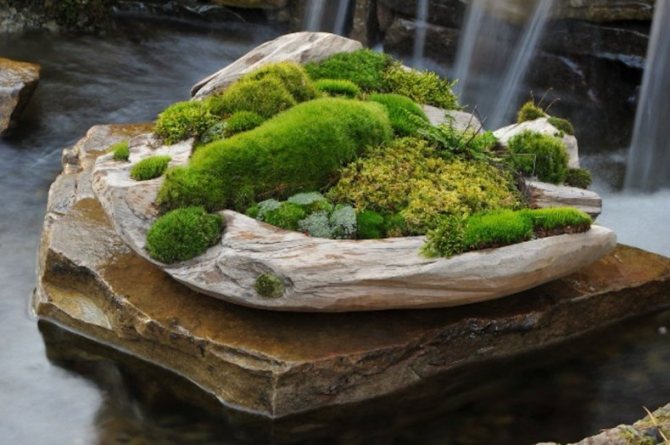

How to grow on an ornamental reservoir
To grow a green carpet framing on a reservoir, you need to purchase a waterproof and breathable geotextile, which is used in landscape design. On the surface of the water, in the place where landscaping is planned, lay out strips of fabric, on top of it pieces of moss. There is no need to water, since the fabric immediately absorbs and retains water, therefore, the seedlings are also sufficiently moistened.
Highlights of bryophyte care:
- compulsory cleaning of weeds - mosses in the absence of root shoots cannot compete with grasses in the struggle for food and moisture;
- several hours of sun in the morning is not necessary, but desirable;
- direct sunlight, especially at the peak of its activity, can burn the plant, change its color;
- watering should be done exclusively with a spray - the plant absorbs moisture with its entire surface;
- an equally bad condition for moss is too acidic soil or low acidity of the soil;
- it is imperative to clean the planting of fallen leaves or tree twigs.


In conclusion, it is worth adding: today, stabilized moss that has undergone a special treatment is on sale. Such material is used to decorate walls, decorative panels, rugs and other design items. The method of processing the plant allows you not to care for it and preserves the original appearance of the bryophyte for many years.
How to get rid of moss
There may be areas in the garden where moss growth is undesirable. In such cases, the best way to get rid of the moss is to create unfavorable conditions for it.
- Make the space open to the sun, that is, remove plants, branches that provide shade to moss, and nearby plants that obstruct air circulation.
- Change the acidity of the soil by adding lime.
- Provide soil aeration as the plant prefers to grow on compacted soil.
- Plant plants that inhibit the growth of moss, for example, ground cover, as well as lyriope, lungwort.
- You can remove the moss manually with a shovel or metal rake, it is removed from the roof and other hard surfaces with a hard brush.
- Cover with a layer of wood shavings.
- Use fungicides (copper sulfate, ferrous sulfate).
- Moss growth is inhibited by dishwashing detergent and baking soda solutions, but this method is ineffective.
Similar articles:
- Omphalodes (Umbilical)
- Solidaster
- Laurentia (Isotome)
- Dracunculus
- Globularia
- Azorella
Growing and caring for moss at home
Many novice growers are interested in how to grow moss at home. These emerald fluffy pads lack roots, flowers, and seeds. To grow and develop comfortably, they need high humidity and very little lighting. Bryophytes take all the nutrients from the water during irrigation, absorbing moisture from their entire surface.
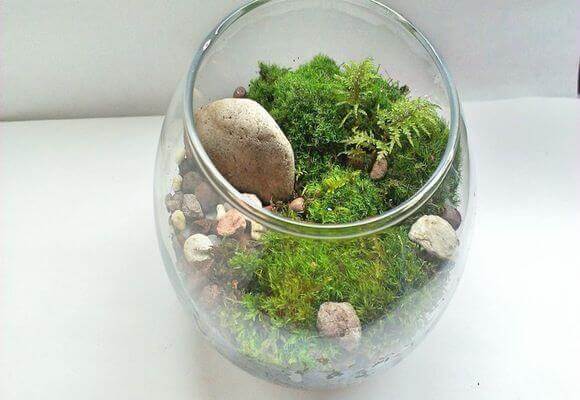

Dry sphagnum moss: growing in the house


The word "sphagnum" is heard by many, but not everyone knows what exactly it means. But this is the same plant from which peat beds are formed. Sphagnum is the last species of Bryophytes from the oldest Sphagnaceae family that has survived to this day. It grows on the moist soil of upland and transitional bogs. Since sphagnum is highly hygroscopic, it absorbs and retains a large amount of moisture. Because of this, areas where there are large clusters of plants are often waterlogged. But it is precisely for these properties that it is highly valued in gardening and floristry.
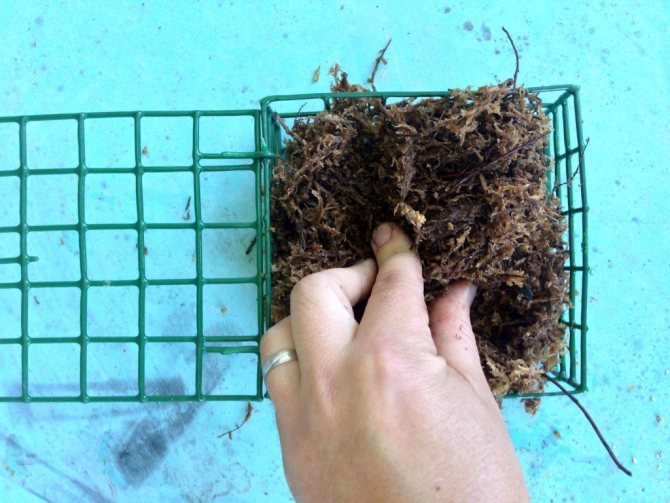

Dry sphagnum is actively used in the cultivation of Orchids. Since it has a low thermal conductivity, its use as an insulating material is widespread in decoration works.
Peat moss in a live state is not for sale in flower shops: you can actually buy only dry one. If you are lucky enough to find it in nature, do not rush to take the plant home. It can be infected by the larvae of pests and pathogens that attack your indoor plants. But try revive dry sphagnum for breeding at home you can. But it should not be a store sample (industrially dried moss cannot be restored).
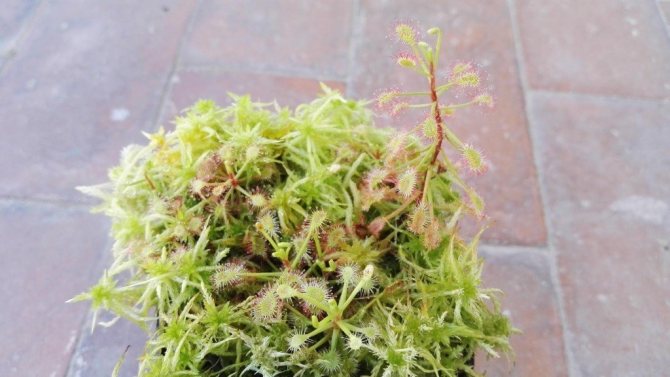

To promote sphagnum growth, fill it with rainwater and place it on hydroponics. To prevent rapid evaporation of water, cover the container with sphagnum foil and put it in a shaded place with a moderate temperature. Note that the chances of the moss growing are minimal. Therefore, the answer to the question "How to grow dry sphagnum moss" is rather negative.
Features of growing bryophytes
Growing such an unusual plant is not difficult at all. And leaving does not represent any special time and financial costs. For these purposes, you can take any container that is at hand.
But experts recommend purchasing a transparent round vase or bowl that can become a real mini florarium indoors. So the moss will look the most profitable and effective.
So, the container chosen for planting is covered with small pebbles at the bottom. It is better to take pebbles or expanded clay, no larger than peas. Thanks to such a drainage layer, stagnation can be prevented and aeration can be increased.
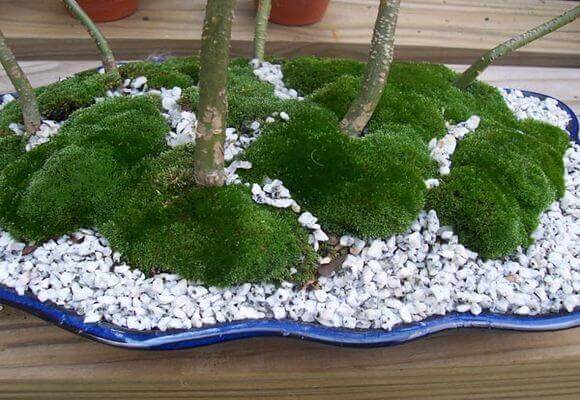

Next, granular coal is taken, lined with a second ball on top of the stones. The last layer is a special substrate, which is sold at specialized points of sale. You can also take a regular potting soil for indoor plants.
You can take moss grown in the forest, while cutting it off along with a layer of turf. But it is still recommended to purchase such a plant at a specialized point of sale. So you can exclude the penetration of various diseases and parasites into the home, which may be on the surface of the pillows.
Next, carefully lower the moss onto the soil substrate prepared in advance and irrigated with water. After planting in the first few days, daily hydration of the plant is recommended. After a while, when adaptation takes place, the active phase of moss growth will begin.
Basic requirements for caring for bryophyte
Irrigation is carried out focusing on the soil layer. If it dries up, you need to moisturize. Moss doesn't like excess liquid. If its color becomes much darker, it is recommended to reduce the amount and frequency of irrigation.
By the way, such a plant can be irrigated from a small watering can or by drilling holes in the lid of a plastic bottle. The optimal interval between humidification after the end of the adaptation period is once every three to five days.
Tiny mossy pads like cool air, increased humidity, and partial lighting. They do not tolerate direct sunlight.It is recommended to install a container with such a plant in a semi-dark corridor, near the aquarium.
This plant is perfect for the office. Bryophyte needs only two hours of indirect sunlight per day for normal growth and development. Thanks to the right lighting, their emerald hue takes on an even richer color.
Popular types of moss for country design
Soft green round, slightly convex pads are formed by Leucobrius moss.
Plants of the genus Leucobryum thrive and thrive in the shade, on moist sandy soils, although a small amount of sunlight will not harm them either.
Hypnum moss is used to decorate stone or concrete paths, patios or low fences. Previously, it was it in dried form that was used to insulate wooden huts.
The genus Hypnum thrives on rocky, woody and brick surfaces, although it is often used to create lawns.
All mushroom pickers are familiar with Kukushkin flax - small vertically elongated plant-columns. This is an ordinary polytrichum, a striking representative of Japanese moss gardens.
Plants of the genus Polytrichum commune prefer moist forest soil or wetlands. In favorable conditions, the plant reaches a height of 35-40 cm
Dikranum green moss is a real find for decorating stones and concrete fences.
Small rounded pads of a bright green shade are small in height - up to 4 cm, so they perfectly hold on vertical surfaces
Fern moss creates dense picturesque thickets and outwardly with its carved leaves really resembles a fern.
Thuidium loves shady areas of the garden and loneliness, so beware of composing with this moss and other plants that it will definitely survive.
Sphagnum is often used in indoor floriculture and for growing ornamental plants in the garden. The stems of the plant are added to the flower soil to make it looser and softer.
Peat moss has a variety of vibrant hues, ranging from pinkish red to deep green. The best places for its growth are the banks of streams, artificial ponds and natural reservoirs.
As you can see, growing moss is not that difficult. Its cultivation does not require financial costs, and the benefits are incomparable: even in the dull period of the off-season, evergreen rugs will delight you with the brightness of colors.
Moss has long been successfully used as a decoration. How to grow moss at home on different surfaces? It's time to talk about simple methods that do not require large investments.
How to grow moss at home?



